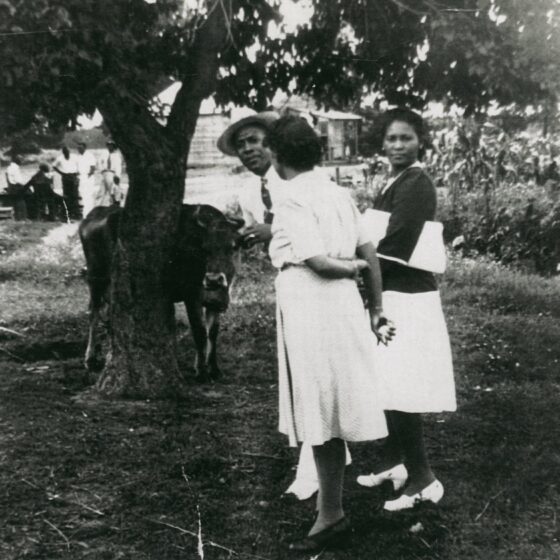Who was Katharine Smith Reynolds?
“She’s gonna do what she thought. She was the first feminist I ever heard of. I mean, she was, she had an opinion and she expressed it.” This opinion, expressed by Zachary Smith, aptly describes his aunt and the wife of tobacco baron R.J. Reynolds. Katharine Smith, the oldest of seven children, was born in the resort town of Mt. Airy, North Carolina. Her father, Zachary T. Smith owned several farms and business interests in town; her mother, Mary Smith, also engaged in business—real estate and stocks. After graduating from college, Katharine returned to Mt. Airy to teach china painting before working for and then marrying R.J. Reynolds in 1905. She was twenty-five years old at that time.
Katharine was a new type of Southern woman, combining the traditional role of wife and mother with progressive ideas on healthy living, education, and agricultural reform. R. J. left the design of Reynolda—the house, the farm, and the village—largely to her, and she hired experts to design and build to her specifications. Her thirteen-year marriage to R.J. produced four children; still, Katharine claimed a succession of leadership roles in local and national benevolent associations, particularly those committed to progressive reform. She worked to ameliorate unhealthy living and working conditions for the poor, with a special focus on rural reform and the welfare of women and children. One of Katharine’s most notable community contributions was helping establish a local integrated YWCA.
Katharine also took an active interest in her husband’s tobacco company. R.J. reportedly remarked that she was the smartest woman he knew and that her good judgment and wise counsel contributed to his success. Katharine encouraged him to open lunchrooms that served hot meals to both white and black employees, persuaded him to permit later arrival for female workers so they might attend to duties at home, and created a daycare for employees’ children.
After R.J.’s death in 1918, Katharine concentrated on educational reform and married Reynolda School principal J. Edward Johnston in 1921. Katharine died on May 23, 1924, mere days after giving birth to a son. She was remembered as having a “broad vision for the present and keen foresight for the future,” and nowhere is that more evident than at Reynolda.
Reynolda revealed video series
See all videosFrom the 1910s to the late 1950s, the segregated community of Five Row was home to Reynolda’s African American farm workers and their families.
A new type of Southern woman, Katharine Reynolds combined the traditional role of wife and mother with progressive practices on healthy living, education, and agricultural reform.

